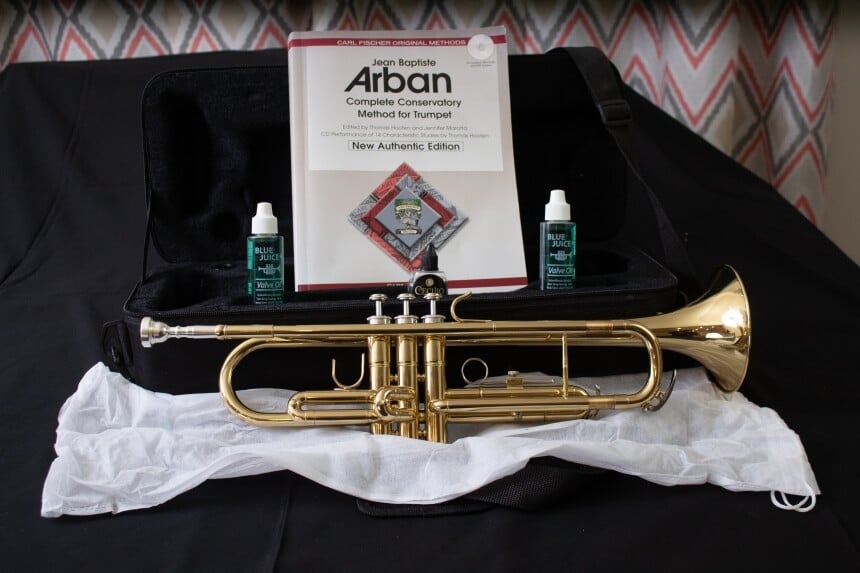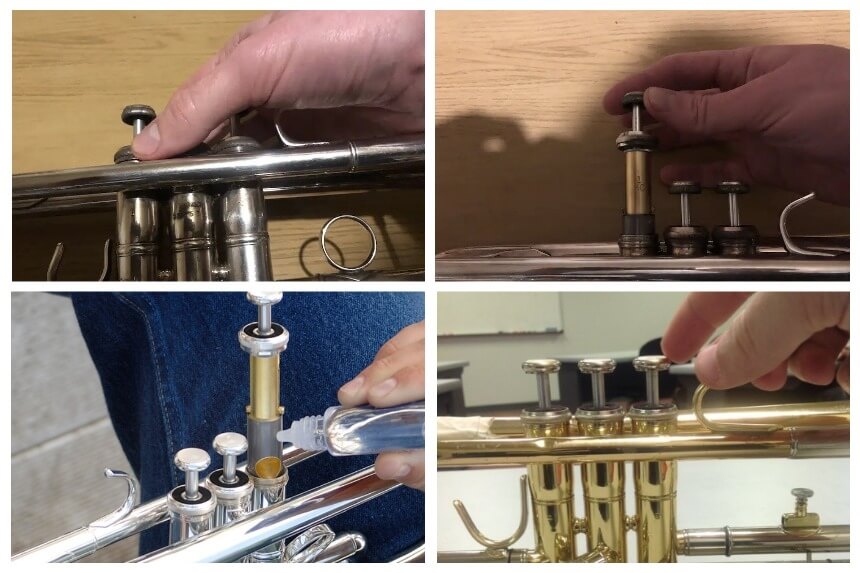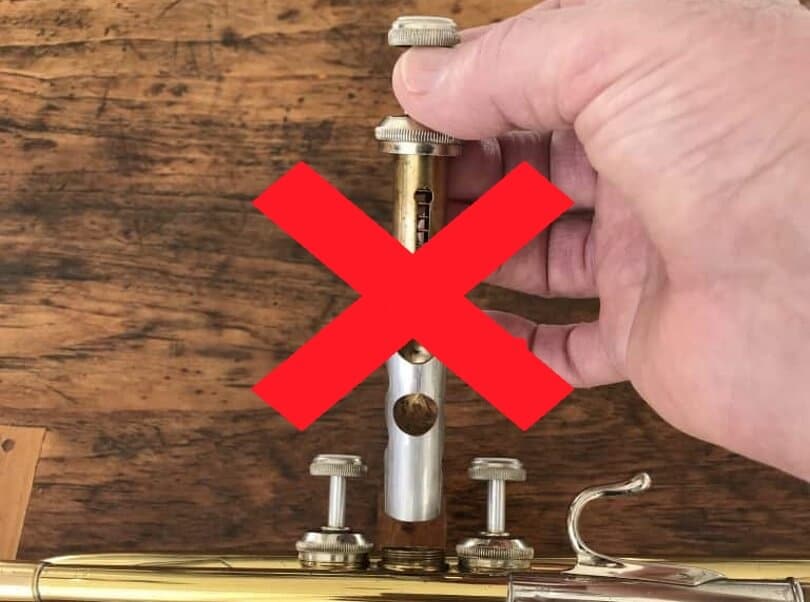Trumpets are brass instruments and the valve is one of its most important parts. It is necessary to oil the valve of the trumpet now and then, whichever quality and type it is, if you want the sound to come out right. The valve usually has casings that are snug tightly to prevent air from escaping. When this happens, it can weaken the sound of the pitch. This is why you need to know how to oil trumpet valves and do it regularly.
You should keep your trumpet valve properly lubricated, so they can move without any restriction. Any dirt around the valve can cause scratching or prevent the valve from moving. The oil you apply acts as a lubricant for both the valve and its casings. The thin layer of oil prevents friction or anything that will cause the valve to rub against the casings. You should read on, to learn how to properly oil trumpet valves.
Like we mentioned earlier, oiling your trumpet valve is something you should do regularly. The process is easy and with just very simple tools, you can quickly get it done. According to reviews online, a stress-free way to oil your trumpet valve is by using the Superslick TPCK Trumpet Care Kit. This comes with all the tools needed for lubricating your trumpets.
In any case, here is what you need to oil your trumpet valve, of course, asides from your trumpet.
 Most valve oil manufacturers, usually state the type of brass instruments that they work for. You can decide if you want the ones made from natural ingredients or synthetic. The synthetic valve oils come with more even-sized particles that make it easier to slide into the valve.
Most valve oil manufacturers, usually state the type of brass instruments that they work for. You can decide if you want the ones made from natural ingredients or synthetic. The synthetic valve oils come with more even-sized particles that make it easier to slide into the valve.
You should not use just any type of valve oil except the ones that are specifically designed for your trumpet valve. If you use the wrong oil, it can cause the valve to jam or even corrode. According to beginning and professional trumpeters online, the most effective valve oil for most trumpet types is the Blue Juice Valve Oil. This oil product prevents the valve from jamming.
Next, we will be looking at each of the steps to get your trumpet valve oiled.
The first thing you need to do after getting all the materials you need for the oiling is to release the trumpet valve. You can do this by unscrewing the top of the cap at the valve casing. Unscrewing the valve cap will release the valve from the inside.
Next, hold the valve around the top finger button and then partly remove it until you see the main piston part coming out of the valve casing. Ensure that the valve is still inside and not completely removed
At this stage, you need to check the alignment of the valve. You will notice a number printed on the valve. Take note of the position or placement of the number when you are taking out the valve.
When you have done the third step above, you can then take off the lid of the valve oil bottle. Touch the nozzle towards the main area of the valve and add only a few drops of the oil.
Now that you have oiled the valve, you should replace the valve in its casing. Remember the position of the number and make sure you push the valve on by holding it around the finger button.
After you have replaced it, also check the alignment again. See that you have the valve placed in the correct position and that it has properly lined up with the casing. You will hear a “click” sound if the valve is properly aligned. If you don’t hear the sound, turn the valve until you can tell it has been placed in the right position. Also, another way to be sure about the alignment is to simply play a note. If you notice air blockage, you can take the valve out again and replace it correctly.
The final step is to replace the valve cap after the valve has been placed properly. You need to screw the top valve cap in its position. This way, you are securing the alignment of the valve.
You should repeat this process with the other valves.
The oiling process doesn’t go smoothly all the time. There are some mistakes people make when oiling their trumpet valve. We will discuss some of these common mistakes, so you can avoid making them.
The first mistake is when holding the trumpet valve by the top finger button, ensure you don’t touch the main valve part with your fingers. This way, you avoid getting the valve oil on your hands or dirt particles on the valve.
 Another mistake to avoid is removing the valve completely. You should only get it out partly and make sure it stops around the piston. Removing the valve completely can damage it by causing dents or scratches. You can also end up mixing up the valves when replacing them.
Another mistake to avoid is removing the valve completely. You should only get it out partly and make sure it stops around the piston. Removing the valve completely can damage it by causing dents or scratches. You can also end up mixing up the valves when replacing them.
One mistake newbies make when trying to oil the valve, is pouring the oil into the bottom cap. When you do this, most of the oil you pour into it won’t even touch the valve. It can even make dirt and lint at the bottom of the valve cap slide into the valve causing it to jam. You must get the oiling process right and with time, you can easily do it without any issues. So, even as a beginner, choose a sturdy trumpet that is made from premium quality brass and delivers high notes.
If you want your trumpet valve to sound as it should, ensure you keep them oiled regularly. You can oil them once after a few days to prevent the valve from jamming. Also, if you notice that movement seems slow or that it could be sticking together, make sure to oil it.
Your trumpet valve is one of the most important parts of your musical instrument and should be properly cared for. If the valve is blocked, you won’t be able to play without damaging the trumpet. You should oil the valves regularly and make them part of your habit. With the instrument properly greased, you can play the right notes without any itch. It is important to know the difference between the musical instruments, so you know the right way to clean them. We hope by now, you know how to oil trumpet valves and carry out the process by yourself.
I’ve always struggled with oiling my trumpet valves, so this step-by-step guide was really useful. I used to make the mistake of removing the valve completely, but now I know to only take it out partly. Thanks for the helpful tips!
This article was really helpful in teaching me how to properly oil my trumpet valves. I didn’t realize that using the wrong oil could actually damage the valves. I’ll definitely be investing in the Blue Juice Valve Oil recommendation!